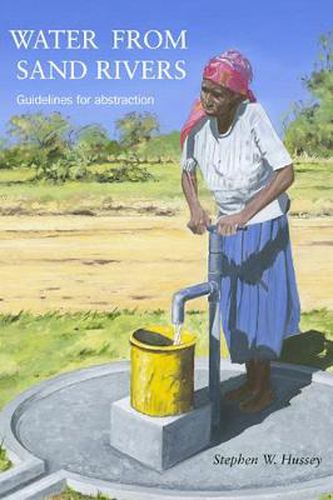Readings Newsletter
Become a Readings Member to make your shopping experience even easier.
Sign in or sign up for free!
You’re not far away from qualifying for FREE standard shipping within Australia
You’ve qualified for FREE standard shipping within Australia
The cart is loading…






Sand rivers can be found in arid and semi-arid areas of the world where water is in short supply. Despite their dry appearance, useable quantities of water often reside in aquifers beneath the surface and can provide a sustainable and safe supply for rural communities. Nevertheless, dry rivers are often overlooked as a realizable source of water. This book sets out to address this issue and promotes the abstraction of water from sand rivers as a viable and affordable option for dryland areas. It enables the reader to assess the potential for abstraction from beneath a dry river bed and provides practical guidelines for doing so. The book is a ‘how to’ manual and is essential reading for engineers, technicians, fieldworkers and project planners who are faced with the challange of providing and sustaining safe and reliable water sources for low-income communities. It is also aimed at providing decision-makers in the water industry, commercial, government and non-governmental organizations with an overview of an alternative, appropriate water supply solution for dryland areas.
$9.00 standard shipping within Australia
FREE standard shipping within Australia for orders over $100.00
Express & International shipping calculated at checkout
Sand rivers can be found in arid and semi-arid areas of the world where water is in short supply. Despite their dry appearance, useable quantities of water often reside in aquifers beneath the surface and can provide a sustainable and safe supply for rural communities. Nevertheless, dry rivers are often overlooked as a realizable source of water. This book sets out to address this issue and promotes the abstraction of water from sand rivers as a viable and affordable option for dryland areas. It enables the reader to assess the potential for abstraction from beneath a dry river bed and provides practical guidelines for doing so. The book is a ‘how to’ manual and is essential reading for engineers, technicians, fieldworkers and project planners who are faced with the challange of providing and sustaining safe and reliable water sources for low-income communities. It is also aimed at providing decision-makers in the water industry, commercial, government and non-governmental organizations with an overview of an alternative, appropriate water supply solution for dryland areas.